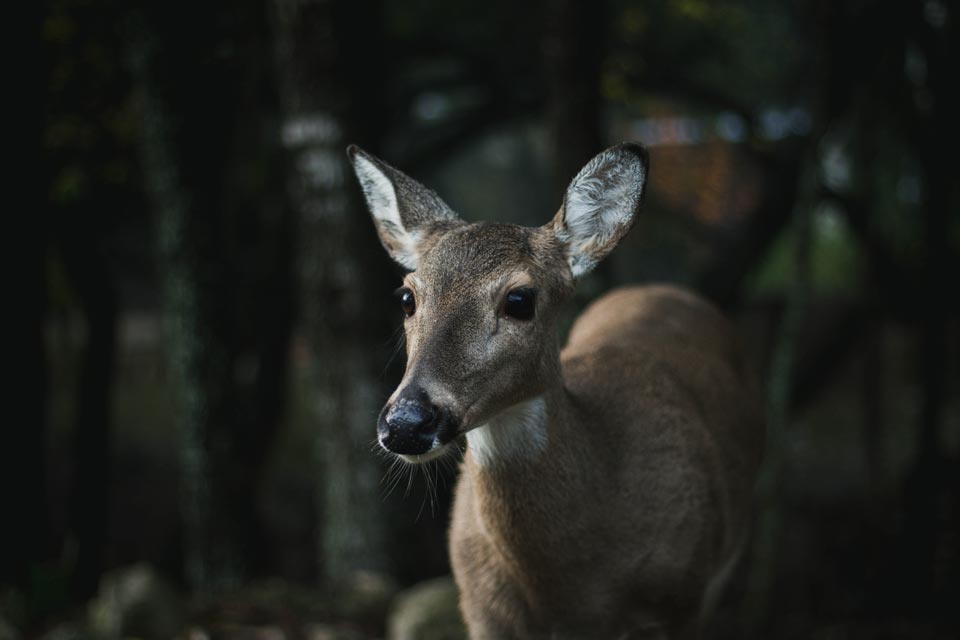Last week we posted a photo of a collared doe known to be at least 5 years old. The photos show a beautiful, healthy doe in the prime of her life…with no fawns.
But fear not.
Does and their fawns are not attached at the hip. We know this through research (those fancy collars we told you about) and observation. Take a look at this picture. Here she is again. This time with TWO fawns.

This brings up another question. Three quarters of the does out there give birth to twins (and a few triplets) so shouldn’t we be seeing more like the picture above?
Well, not really.
First, the twins have to survive to 10 weeks of age (before they can be seen traveling with their mom in August at some point).
As we now know, a little over half of fawns survive to 10 weeks of age. So 50% of twins are now singletons and 25% of females are completely fawn-less.
How do we know that? It’s back to school time so get your thinking cap on.
We’ll do a little rounding to make the math easier. Let’s say 60% of fawns survive to 10 weeks. A doe has two fawns – we’ll call them Oliver and Virginia. You’ll understand why they need names in a minute. The probability of Oliver surviving (0.60) and Virginia dying (1 – 0.6 = 0.4) is 0.24 (0.6*0.4=0.24).
Now pay attention. The probability of Oliver dying (0.4) and Virginia surviving (0.6) is 0.24 (0.4*0.6=0.24). We assume that each fawn has its own probability of surviving which is independent of the other.
That means the probability of either Oliver or Virginia dying is (0.24 + 0.24) = 0.48! About 50%.
All these mind numbing calculations mean only about 1 in 4 (or maybe 1 in 3) adult doe still have both Oliver and Virginia (twins) following them around.
Of course, the assumption that the fate of one twin is independent of the other has never been proven for white-tailed deer, but it turns out to be a pretty good assumption for mule deer.
The second reason does with twins aren’t as common as dirt right now is that many yearlings (those females that turned 1 year old this past June) are not even pregnant. North of I-80 practically zero give birth. South of I-80 at most 30% of yearlings give birth. And when they do, it is usually a single fawn, not twins.
As it stands, only a fraction of does have twins following them by the time the unofficial end of summer rolls around.
Oh, and don’t forget, mothers and fawns aren’t inseparable 🙂
-Duane Diefenbach and Jeannine Fleegle
If you would like to receive email alerts of new blog posts, subscribe here.
And Follow us on Twitter @WTDresearch
